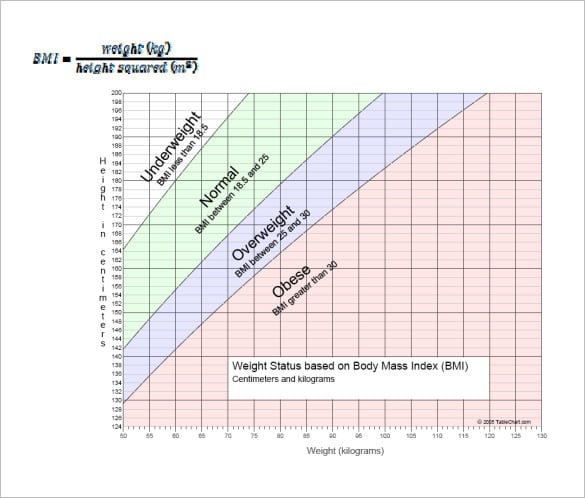

Inside the square where your weight and height meet is a number that is an estimate of your BMI. First, identify your weight (to the nearest 10 pounds) in one of the columns across the top, then move your finger down the column until you come to the row that represents your height. During pregnancy and lactation, a woman's body composition changes, so using BMI is not appropriate.įor more information, visit Health Canada's Canadian Guidelines for Body Weight Classification in Adults. You can also determine your BMI using the table below. Those with a lower muscle mass, such as children who have not completed their growth or the elderly who may be losing some muscle mass may have a lower BMI. BMI does not measure body fat directly, but BMI is moderately correlated with more direct measures of. BMI is an inexpensive and easy screening method for weight categoryunderweight, healthy weight, overweight, and obesity. Those with a higher muscle mass, such as athletes, may have a high BMI but not be at greater health risk. Body mass index (BMI) is a person’s weight in kilograms divided by the square of height in meters. This is because BMI does not take into account whether the weight is carried as muscle or fat, just the number. The formula is BMI kg/m2 where kg is a persons weight in kilograms and m2 is. The BMI may be determined using a table a or chart which displays BMI as a. The BMI is defined as the body mass divided by the square of the body height, and is expressed in units of kg/m 2, resulting from mass in kilograms and height in metres. Then, find your BMI by squaring your height in meters and then dividing your weight by your height in meters squared.

Who shouldn't use a BMI calculatorīMI is not used for muscle builders, long distance athletes, pregnant women, the elderly or young children. Body Mass Index is a simple calculation using a persons height and weight. Body mass index ( BMI) is a value derived from the mass ( weight) and height of a person. For example, 152 centimeters equals 1.52 meters. The formula is BMI = kg/m 2 where kg is a person’s weight in kilograms and m 2 is their height in metres squared.Ī BMI of 25.0 or more is overweight, while the healthy range is 18.5 to 24.9. BMI is less accurate for assessing healthy weight in some groups of. BMI can indicate risk for developing certain medical conditions including diabetes, high blood pressure, and other metabolic conditions. It gives you a clue to your risk for weight-related health. Body mass index (BMI) is a guide to help people estimate their total body fat as a proportion of their total body weight. BMI, or body mass index, measures how healthy your weight is based on how tall you are. The result helps you understand if your BMI corresponds to a healthy range. Body Mass Index is a simple calculation using a person’s height and weight. There's no 'perfect weight' that fits everyone. The BMI tool takes your weight and divides the figure by the square of your height.


 0 kommentar(er)
0 kommentar(er)
